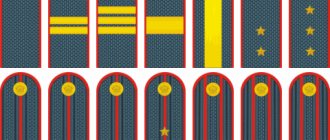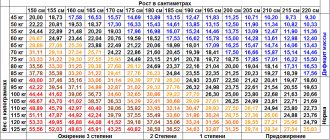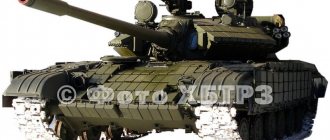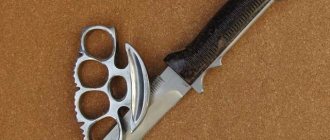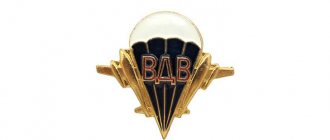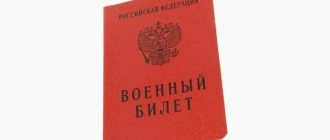Many people unfairly consider the bow to be a primitive weapon, not worth attention. However, this is far from true; it has developed over tens of thousands of years and is currently a rather serious subject that requires attention.
Those who plan to take up archery seriously and for a long time must certainly have knowledge of what modern bows are, how they are divided, and what they are made of.
In modern life, the need to obtain food with the help of these weapons has disappeared, so bows are used mainly for entertainment as hunting bows. Therefore, no serious developments have been made in the field of creating hunting bows. Although there are samples specially designed for serious hunting. But the main merit in the development of the bow belongs to sports shooting.
Since ancient times, not only the materials from which bows were made have changed, but the design has also been significantly redesigned. For example, bows intended for competitions and training have the ends of the arc in the direction opposite to the tension of the string.
The arcs themselves became flat, and not round as it was before. For greater ease of transportation, without loss of power, bows began to be made collapsible.
Varieties of bows for arch-shaped shooting - reinforced longbow and others
This is the oldest classification of bows. Even in ancient times, simple and compound bows were distinguished. If the material from which the bow is made is bent into a regular arc on which the bowstring is stretched, it is a simple bow.
But if the shape of the arc has several bends, the bow is reinforced with tendons and horn plates, and the handle and ends are possibly made of bone - then without any doubt such a bow belongs to the category of complex.
According to the shape of the arches, bows are:
- straight, having neither arc bends nor bent ends;
- open - the arc of which is slightly curved;
- closed, their arc resembles the letter “c” turned in the opposite direction;
- deep - with strongly curved arc horns;
- compressed - the horns are at a slight angle from the handle.
Simple bows do not have arches and are classified as straight bows. A classic example of a straight bow is the American Indian bow and the English classic bow.
Geographical types of archery bows and their uses - compound bow and others
Simple bows were used by peoples living in the distant past in the territory of South Africa and America, in Melanesia. They were used to hunt wild animals; the Romans and Anglo-Saxons, Normans and Germans went into battle with them.
Complex ones were made by eastern peoples. Vivid examples of compound bows were the Mongolian and Slavic bows. The Chinese, Arabs, and Turks fought with such bows.
Different bow designs ensured effective shooting for infantry and cavalry. The ancient Egyptians, Romans and Greeks shot not only from the saddle, but also from horse-drawn chariots. And the Japanese could even fire from a sitting position, hidden in ambush, among the bushes.
And, of course, depending on the places of residence of certain peoples, materials were used for bows that people could obtain with greater or less difficulty in these areas.
Types of bows by materials
Even ancient tribes and more recent peoples and tribes made bows from materials significantly different from each other, what can we say about modern bows, created from an incredible variety of raw materials.
Wooden bows, in all likelihood, were the very first of them. This material is still used in the production of bows, but as a rule, handles are mainly made from it. It is very rare to find completely wooden bows; these are mostly collectible or homemade models.
Peoples living in places where it was easier to obtain materials of animal origin for the bow than to find wood, learned to make bows from the horns, tusks and bones of animals. Later versions of bows among peoples inhabiting places generously endowed by nature with trees and animals were composite. That is, the arcs were made of several types of materials. These could be different compositions:
- several species of different trees and their bark;
- wood and animal bones.
Modern bows can be made of metal, fiberglass, carbon fiber and other materials, each of which, having special qualities, provides bows with certain technical characteristics.
Early ripening varieties
Stuttgarter Riesen
A common, reliable, early-ripening variety, it takes about 70 days from planting to harvest. The golden-brown onion is small, weighing up to 90 g, flattened, dense. The taste is rich, with pronounced pungency. The yield is constant and high, up to 35 kg per 10 square meters. m.
It ripens up to 55% in the garden and requires ripening, for which the bunches are hung in cool rooms. After this, it shows high safety; over the entire period there are small losses, up to 5%. Weakly resistant to fungal diseases, in unfavorable years it is affected by downy mildew and neck rot.
Yucont
Onion variety Yukont
A reliable variety can be obtained when sown with seeds or sets. When grown from seeds, it ripens within 90 days; when planted as a set, it ripens within 62–73 days after emergence. The shape is flat-round, on average an onion head weighs about 100 g, the taste is piquant and pungent. The upper scales are bright, purple with a crimson tint.
The yield of Yukont depends on the region of cultivation, the maximum indicators are 30 kg per 10 sq. m. It ripens up to 93% in the garden, and after ripening it is stored without noticeable losses for 8 months or more.
Carmen MC
It is preferable to grow productive, beautiful onions from sets; in this case, 65–95 days will pass from planting to lodging of the leaves. Bulb with two or three rudiments, round, leveled, moderately dense, weighing up to 70 g. The pulp is white with a purple tint. The upper scales are few, bright, reddish-violet. The consumer qualities are high, the taste is semi-sharp.
Productivity is average, up to 17 kg per 10 square meters. m. Ripens on the site, does not need ripening, is stored perfectly, with minor losses.
Snowball
Onion variety Snowball
Snowball is recognized as one of the best modern white onion varieties. Its name means snowball, snowball and immediately describes both the shape of its bulbs and color: they are almost round and white, both outside and inside, and the dry scales are even whiter than the juicy ones (and, by the way, its juiciness is very great, and its taste For a semi-sharp dish it’s quite pleasant, you can just eat it fresh). Each such “snowball” weighs about 100 g. In terms of ripening time, Snowball is mid-early, that is, you won’t have to wait too long for its harvest and you can have time to grow it even where the frost-free period is short, especially since this variety is very resistant to bolting. In addition, Snowball's bulbs are quite durable.
Types of bows by design:
- hybrid bow for shooting,
- compound or classic bow,
- shoulders for a classic bow and their size
But the variety of bows does not end there, since each type can also differ in design features, including the location of the arrow in relation to the longitudinal axis. So, according to the design features, the following types are distinguished:
- Solid - The arc of such a bow is a single piece that cannot be disassembled without causing damage to the product.
- Collapsible - Their design involves separating several different parts that make up the bow, for greater ease of storage and transportation.
- Compound - Bows whose power is enhanced by an elongated bowstring passing through a system of special rollers located at the ends of the bow. These bows are considered more powerful, although everything depends not only on the type of bow, but also on its manufacturer, manufacturing materials and many other little things.
Large varieties
Exhibition
Onion variety Exibishen
The light yellow onion is rounded, elongated, heavy, can weigh half a kilogram, and sometimes 800 g. The taste is excellent, salad, sweet. They are grown by planting seedlings with a planting density of up to 20 pieces per 1 square meter. m. The time from planting seedlings to harvesting is about 130 days.
Exhibition is very productive; due to the large heads, in favorable conditions you can harvest up to 43 kg from 10 sq. m. It ripens poorly on the site, on average 60%, requires long ripening, and storage quality is below average.
Globo
This late-ripening salad variety is characterized by a perfectly round shape and a mild, sweet taste. Ripens within 120–130 days from planting. Very large, weighs 700–800 g, kilogram specimens are not uncommon. The inner scales are white, filled with tasty juice, the husk is yellowish-orange.
Globo amazes with the excellent yield of huge commercial bulbs; it can produce up to 90–120 kg per 10 sq. m. Preservation is average or low, tends to germinate in storage.
Russian size
The huge onion grows to a record weight of 3 kg. The shape is round, slightly elongated at the neck, the integumentary scales are golden-yellow, slightly greenish. The pulp is creamy white, the taste is sweet, delicate with a slight piquant pungency, without a strong odor.
To obtain selected specimens, it is necessary to grow seedlings, sowing seeds in pots in February. In this case, harvesting falls in August-September. The preservation is low; it is often used in salads and preparations.
Components of a Compound Bow
- Lever
- Blocks
- Cable (technical string)
- Bowstring
- Arrow shelf
- Stabilizer installation location
- Bow shoulder
photo. Compound Bow Parts
- Recurve - The bend of the horns (shoulders) of the bow is directed in the opposite direction. When the bowstring is pulled, they turn towards the shooter, and at the moment of the shot they impart to the arrow a force twice as strong as that of conventional bows. Accordingly, the arrow flies much further. For each of these types, the center of the arrow can:
- - converge with the longitudinal and transverse axis of the bow (central bow);
- - do not converge with the axes of the bow (peripheral bow).
The choice of one type of bow or another depends on what tasks and goals the shooter sets for himself, for example, sporting achievements or general physical development, entertainment or certain types of hunting.
Mid-season varieties
Aleko
These bright, tasty onions are produced equally well both by sowing seeds and by planting sets; in the latter case, the harvest is obtained in 100–110 days. The onion is round in shape, weighs up to 60 g. The flesh has a sharp, rich taste, dense, white with a purple tint. The upper scales are purple with a purple tint.
Productivity is stable, above average - up to 19.6 kg per 10 square meters. m. Ripens well on the site - up to 94%, requires short ripening, after which it is stored perfectly.
Odintsovets
The round golden bulbs are well preserved, transportable and suitable for mechanized harvesting. Medium size - 60–80 g, white-cream flesh, with a pleasant harmonious taste and slight pungency. The integumentary scales are dense, golden-bronze.
The crop is harvested 110–120 days after emergence, receiving an average of about 15 kg per 10 sq. m. A significant drawback is susceptibility to downy mildew and neck rot, so plants during the growing season need regular treatments with fungicides.
Setton
A universal onion with high taste and excellent preservation, ripens 110 days after planting. On average, it weighs about 120 g, under optimal conditions it can be larger, up to 150–190 g. The shape is round-oval, slightly elongated at the neck. The color of the integumentary scales is yellow, in the area near the neck it is brownish. The pulp is creamy, spicy-sweet, spicy.
The yield is high; with good agricultural technology you can get up to 50 kg per 10 square meters. m. Resistance to fungal diseases and bolting is above average.
Krasnodarsky G 35
An old reliable variety of domestic selection. The harvest is harvested 110–120 days after sowing. The bulb is medium-sized, one-dimensional, weighing about 100 g. The integumentary scales are yellowish-brown with a slight pinkish tint. The pulp is white, semi-sharp taste.
Stable harvest, you can harvest up to 20–40 kg from 10 sq. m. Maturation largely depends on weather conditions and ranges from 50–95%, keeping quality is mediocre. In damp, cool weather it is affected by fungal diseases - downy mildew and neck rot.
Using bows
A bow can be intended for use for different purposes and, accordingly, in different conditions. Therefore, depending on the tasks facing the archer, they are divided into hunting, sporting and recreational shooting bows.
Hunting bows - must be quite powerful, but hunting animals with a bow is prohibited in many countries. On bows intended for hunting, shortened stabilizers and special sights are installed with the ability to set different distances at the same time.
In addition, these bows must be sufficiently light and compact, resistant to aggressive environmental influences (heat, cold, rain and snow). It is desirable that when firing they make as little noise as possible.
For hunting fish, a sight and a shortened stabilizer, a professional sight for different distances, and a reel for fishing line are also installed. For fishing, you should purchase special arrows with replaceable tips. Bows for this type of hunting must have a special clause about such purpose in the instructions.
Advice! In order to avoid getting into a conflict situation with representatives of law enforcement agencies during a hunt, carefully read the cases in which it is permitted and what restrictions exist.
Standing varieties
Traditionally, sharp varieties are considered to have the best shelf life, semi-sharp varieties are stored worse, and sweet onions have the least shelf life.
Bessonovsky local
Onion variety Bessonovsky local
Early ripening onion, with excellent preservation and several nests. The color is golden, the shape is round, slightly flattened, sloping down to a thin neck. Small size - up to 45 g. Internal scales are dense, white, crispy, with a pungent, burning taste. It ripens quickly - 55–80 days after planting.
Productivity is stable, ranging from 11–26 kg per 10 square meters. m. Ripens well, requires drying and is stored for 8–9 months.
Timiryazevsky
Mid-season universal sharp onion of round shape. The color of dry scales is yellow or light brown, brownish at the neck. The weight of onion heads is 50–70 g, ripening when grown in sets lasts 78–82 days from the moment of mass germination.
The yield is high, when grown from sets it is up to 38 kg per 10 sq. m. Ripens completely in the garden - up to 98–100%, in wet years it is worse - up to 70%, and requires ripening and drying. Transportability is high, safety by May is 85%. Affected by downy mildew, moderately resistant to neck rot.
El Dorado
Resistant to cold weather conditions and recommended for growing in northern regions as an annual crop. Ripens 90–110 days after emergence. The bulbs are yellow, heterogeneous in shape - round, oval or slightly elongated, weighing up to 100 g. The pulp is creamy-white, with a pungent taste.
Productivity up to 32 kg per 10 sq. m, requires ripening for 10–14 days. It is characterized by average resistance to downy mildew, can be stored for a long time up to 8–9 months, without significant losses.
Arzamas local
A common domestic mid-season variety with a characteristic pungent taste. Harvest 100–110 days after germination. The bulb is brown-yellow, round, can be oblong, oval or even slightly cubic in shape, greenish at the neck, weighing 70–90 g.
Susceptible to downy mildew, plantings are severely damaged by onion fly. The yield when grown in a two-year crop is high - up to 32 kg per 10 square meters. m. Ripening rate is up to 93%; it requires short ripening before storage. Shelf life is good for 7–8 months.
Azelros
Onion variety Azelros
Excellent in cold regions, disease resistant and productive. It is grown by sowing seeds and planting sets. The bulbs are round, leveled, weighing up to 120 g, with deep yellow scales. The taste of the white pulp is semi-sharp and pleasant. It ripens within 90–105 days from the moment of germination and belongs to the mid-early varieties.
Productivity is high - up to 50–60 kg per 10 square meters. m, advantages - resistance to fungal diseases and excellent shelf life.
Bulbs of the following varieties are also well stored:
- Buran,
- Donetsk golden,
- Golden,
- Karatalsky,
- Skvirsky,
- Strigunovsky,
- Chernigovsky.
Sports bows and their varieties
The most advanced and numerous are bows for sport shooting. There are several types of them:
- Traditional - made of wood, longbows based on the classic English bow. Any body kits, composite or plastic parts are prohibited. Arrows in the classic version are wooden, but recently some relaxations have been introduced in this regard.
- Olympic - preserving classical traditions, but made from modern materials, collapsible bows. In order for the bow to meet the requirements for sports competitions, a sight is used at only one point, and the second must be installed by the shooter independently without additional devices. It is permissible to install a stabilizer.
- Compound is a compound bow whose design is completely modern and unique, it has no historical prototypes. The main advantage is the release of tension at the moment of maximum tension of the bowstring. Therefore, the archer does not feel heavy when aiming, which, thanks to this feature, can last quite a long time. These bows are equipped with optical sights that have two aiming points. According to the shooting technique, the bowstring should be held not by hand, but by a special mechanism. The speed of an arrow fired from a compound bow, all other things being equal, will be twice that of a traditional or Olympic bow.
a) solid b) collapsible
Best models
Among all the existing models of shooting bows, it is worth highlighting the following.
W&W Archery SF Optimo
The handle is flexible and durable thanks to its multi-layer structure. The kit includes a gaiter, a stick, a finger guard and a sight. Weight is only 1.2 kg.
W&W Archery SF Optimo.
Sebastien Flute Optimo
Sebastien Flute Optimo.
Natural wood is used for production. The weight of the weapon is about 1.11 kg. The onion itself is collapsible, and therefore it can be stored without problems and, if necessary, taken with you on the road.
The shoulders are covered with varnish and plastic. The bowstring is made of Kevlar, and therefore has increased strength and durability.
Cartel Doosung Sirius
Composite plastic, which is lightweight, was used to make the handle. Also, in order to reduce the weight of the weapon, the manufacturer made many holes. They can accommodate a clicker, stabilizer and other accessories.
Basis and principles of bow classification
For recreational shooting, any bow with low power and short arrow range can be used. However, even when using them, it should be remembered that the arrow can cause harm to health, and even quite significant. Therefore, all precautions and safety precautions must be observed.
The best option to start shooting would be to visit a special shooting club, where the trainers will tell and show you how to shoot a bow correctly and what the safety rules are. There you will not only learn how to shoot, but also try on different classification models.
The classification of bows is based on sports throwing and small arms, since all other types have no fundamental differences and are built on the same basis as bows intended for sports shooting. They contain all the same changes in design and production technology. In the full classification description of each bow model, the historical name according to the shape of the arc is given first place: simple or complex bow. Next, the terms are arranged in chronological order of each feature they represent.
What do they grow in the garden?
The main crop for cultivation on dacha acres and vegetable gardens of rural farmsteads is edible types of vegetables that are stored until the next harvest, namely onions and shallots. Of the green varieties, Russians prefer leek and Chinese.
Every garden has a place for perennial crops. They reproduce vegetatively and by seeds. This is a batun, a fragrant onion. In a shaded place, plants do not require watering or special care.
Perennial varieties are not afraid of winter. In areas with frosts of 35 ° C, they safely survive the cold; in the spring, they are the first to throw out arrows, for example, slime. The salad crop remains tender throughout the summer. It grows in one place for up to 7 years. When it gets smaller, it is transplanted to another place, and it again supplies it with vitamins until late autumn.
Additional Information! Decorative varieties look impressive on a personal plot. They are natural and bred by breeders, for example, the Neapolitan variety with snow-white flowers, Moli (golden), Pretty, reminiscent of a miniature fountain.
